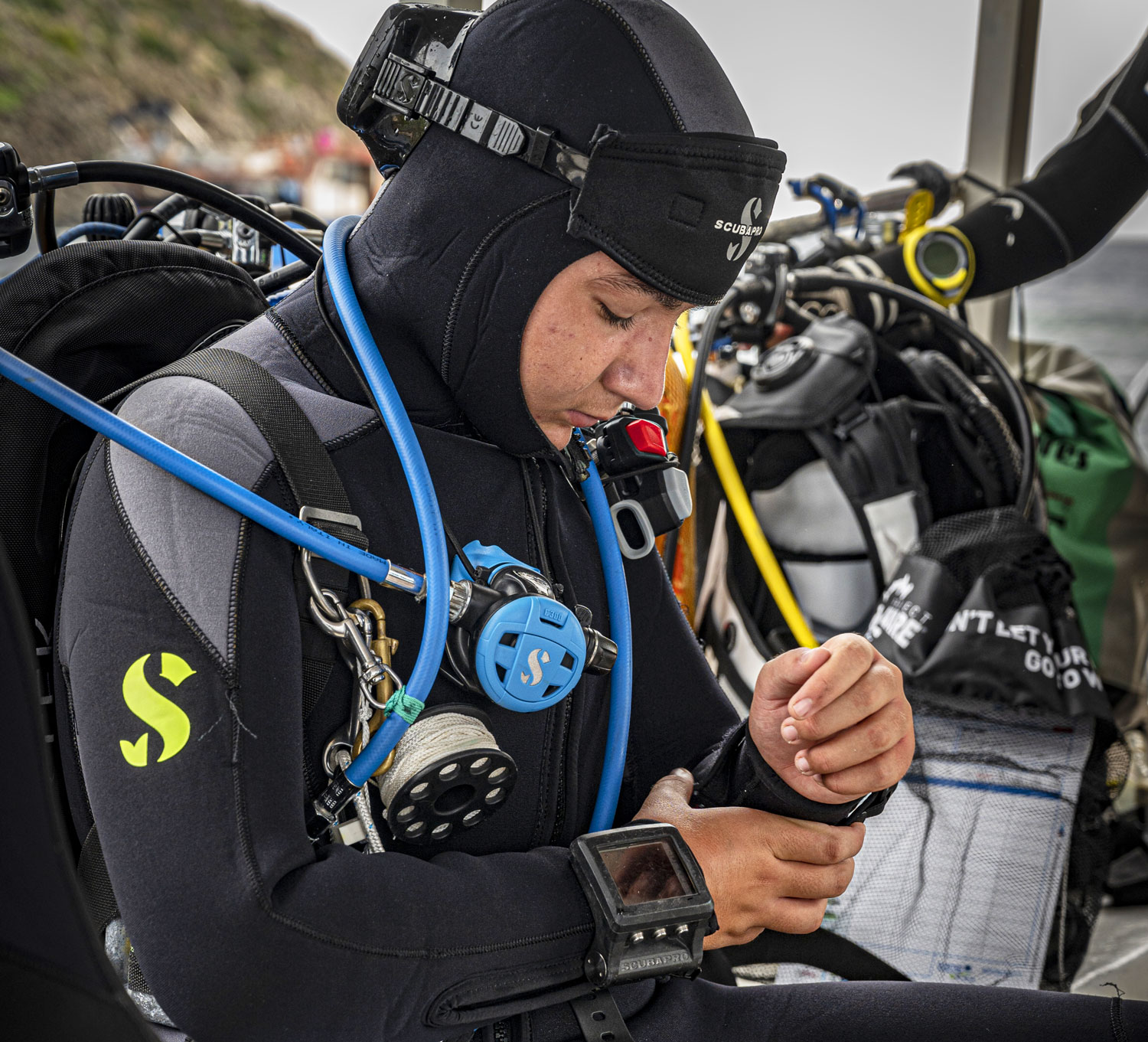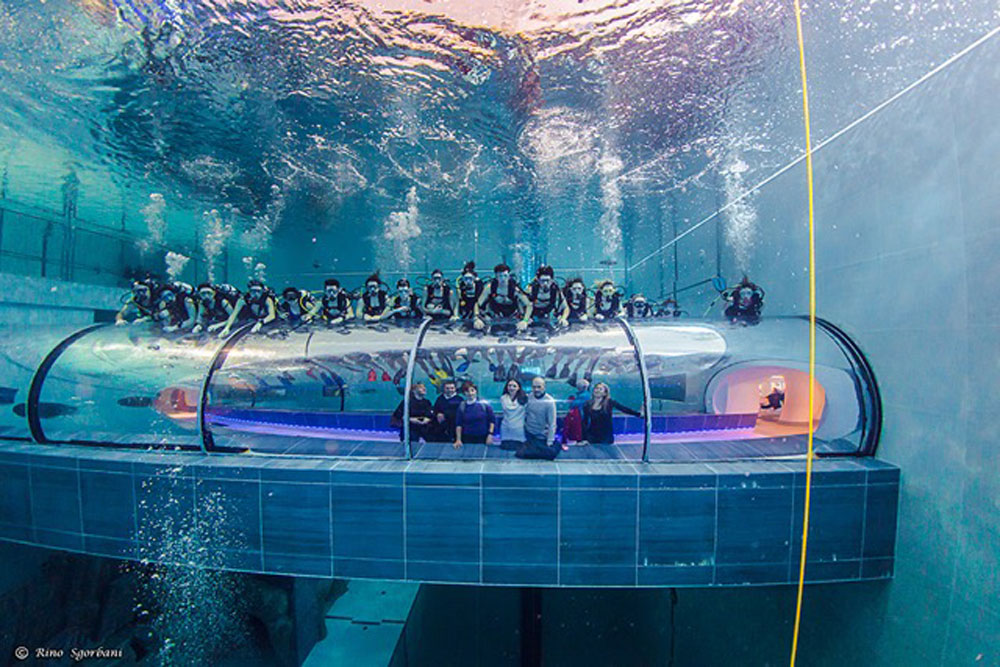Safety
Should We Treat Children as Small Adults When it Comes to Diving?
Depending on the dive training organisation or country, starting from the age of eight, children can participate in introductory diving activities in a pool or suitable confined water, and from the age of ten, they can participate in “junior” diving courses. While this in itself is not necessarily a problem, parents, doctors issuing fit-to-dive evaluation certificates, and dive instructors need to consider several pertinent aspects before allowing young children to dive.
An important question is: does the child want to dive, or is it the parents that want their child to dive? Parental pressure is not uncommon. This is a red flag. You should never force a child to undertake a diving course when they feel uncomfortable or feel obliged to participate. This makes for a very unsafe situation for all.
The child needs to be medically evaluated and the doctor should be aware of at least the following considerations:
- Pulmonary development until the age of eight, where the diameter of the airways and lung elasticity are not fully developed.
- Higher pulmonary closing volume (the volume in the lung at which its smallest airways, the respiratory bronchioles collapse).
- Functional immaturity of the Eustachian tube opening mechanism.
- Inner ear/sinus problems, which are more prevalent in small children and can pose problems when diving.
- The presence of any cardio/respiratory or musculoskeletal system issues.
- Incomplete bone development.
- Unfavourable body surface to weight ratio, which increases the risk of hypothermia.
- Emotional instability.

Finally, dive instructors need to evaluate the maturity of the child. The following questions are important:
- Is the child capable of listening, understanding, following rules and interpreting hypothetical questions?
- Is the child capable of understanding mathematical and physical laws?
- Is the child capable of identifying and interpreting fear, and reacting appropriately when stressed, scared or frustrated?
- Is the child capable of communicating problems, asking for help and offering help?
- Does the child possess the ability to self-care and to take care of others?
- Does the size of diving equipment present any issues in relation to the size and form of the child?
- Is the child able to tolerate increased thermoregulation/metabolism? It is important to understand that a child will lose heat faster than an adult, and may become hypothermic within a relatively short period.
- Will the child be comfortably able to enter and exit the water when fully equipped, and to manage any adverse dive conditions such as currents and wave swell? Children may simply be not physically capable of taking care of themselves or others in many of the aspects of safe diving.
- Will the child be able to handle the stress of the underwater environment, and are they comfortable in water?
There is no specific psycho-technical test to assess a child’s overall ability to dive safely and comfortably. Consider the reaction of many children to distraction and concentration. A child may have a greater sense of adventure but a low-risk awareness. Children use concrete thinking and are less able to react adequately in situations that are different from those described by their instructors.

Diving courses for and with children
As a parent, you want to be confident that the instructor is knowledgeable and experienced when taking your child into water; as a diving instructor, you want to make sure you have what is needed to do this safely.
Dive organisations have specific safety standards, but these are mainly applicable to adult course standards, with some restrictions (depth limits), and or special requirements for the diving buddy. As a result, children will be learning from training materials produced for adults. It is therefore important that the instructor is able to explain certain concepts, and or have the tools that can help explain these to the child, and also to their parents.
Most dive organisations do not offer or require additional training from their instructors to dive with children, and so it is important for the instructors to understand the many considerations that apply to teaching children to dive. It is not only a diving depth limitation. Instructors should be aware of the responsibility they have and inform themselves thoroughly to mitigate all the risks.
Diving equipment for adults might cause discomfort, difficulties, stress or even panic in a child. An adult small size BCD might be too big and result in the cylinder pulling the child to one side, which, in addition to a safety problem, will also ruin the fun. The instructor or dive centre needs to have child-sized equipment, which includes:
- Appropriate BCDs sizes.
- Child (low profile) masks, which are easier to clear when flooded.
- Smaller snorkels: Due to the dead space and potential for CO2 build up in snorkels, the volume for children should not exceed 150 ml, whereas for adults, the volume can be up to 230 ml.
- Fins with soft blades will give the needed propulsion, but will help avoid leg cramps.
- A child size diving suit: A child loses temperature faster, so the dive suit needs to have a good fit and an appropriate thickness.
- Lightweight regulators, with shorter hoses and smaller mouthpieces.
- Small/lightweight cylinder.
- Weight system: Consider using an integrated weight system to avoid the weight belt slipping off children’s smaller hips.

After the course
Many of the same concerns as described above remain valid. The child’s dive buddy, which may be the parent, needs to understand the diving limits, and plan dive trips to appropriate destinations taking into consideration both the local diving conditions, as well as, the availability of the equipment that the child will need. Clearly, a child will not be able to participate in every type of diving and the buddy needs to be qualified, experienced for the type of dive planned, and physically fit. They also need to be confident in caring for, assisting and even rescuing a child.
To conclude, while we can say diving for children can be fun and safe, it is important to understand that everybody involved with training and diving must understand the limits and not simply consider children to be small adults.
About the author
Guy Thomas is an expert Diving and First Aid Instructor Trainer and works full-time as Director of Safety Programs at DAN Europe, where he is responsible for the development and implementation of the DAN Europe Safety Initiatives. He also is a member of the Special Rescue Team of the Italian Red Cross and operates as a Helicopter Rescue Swimmer/Diver Medic, onboard a SAR helicopter of the Italian State Police.

